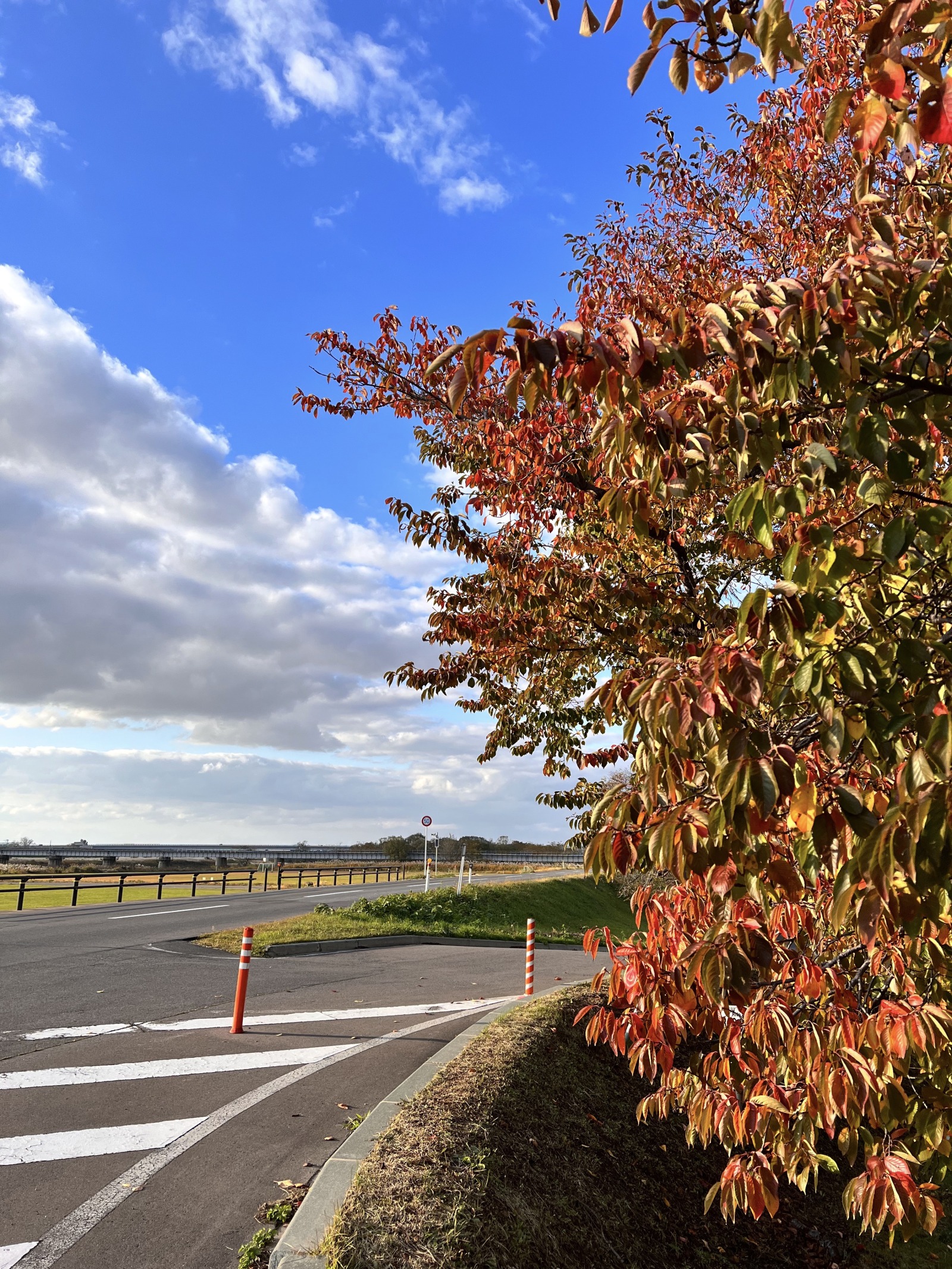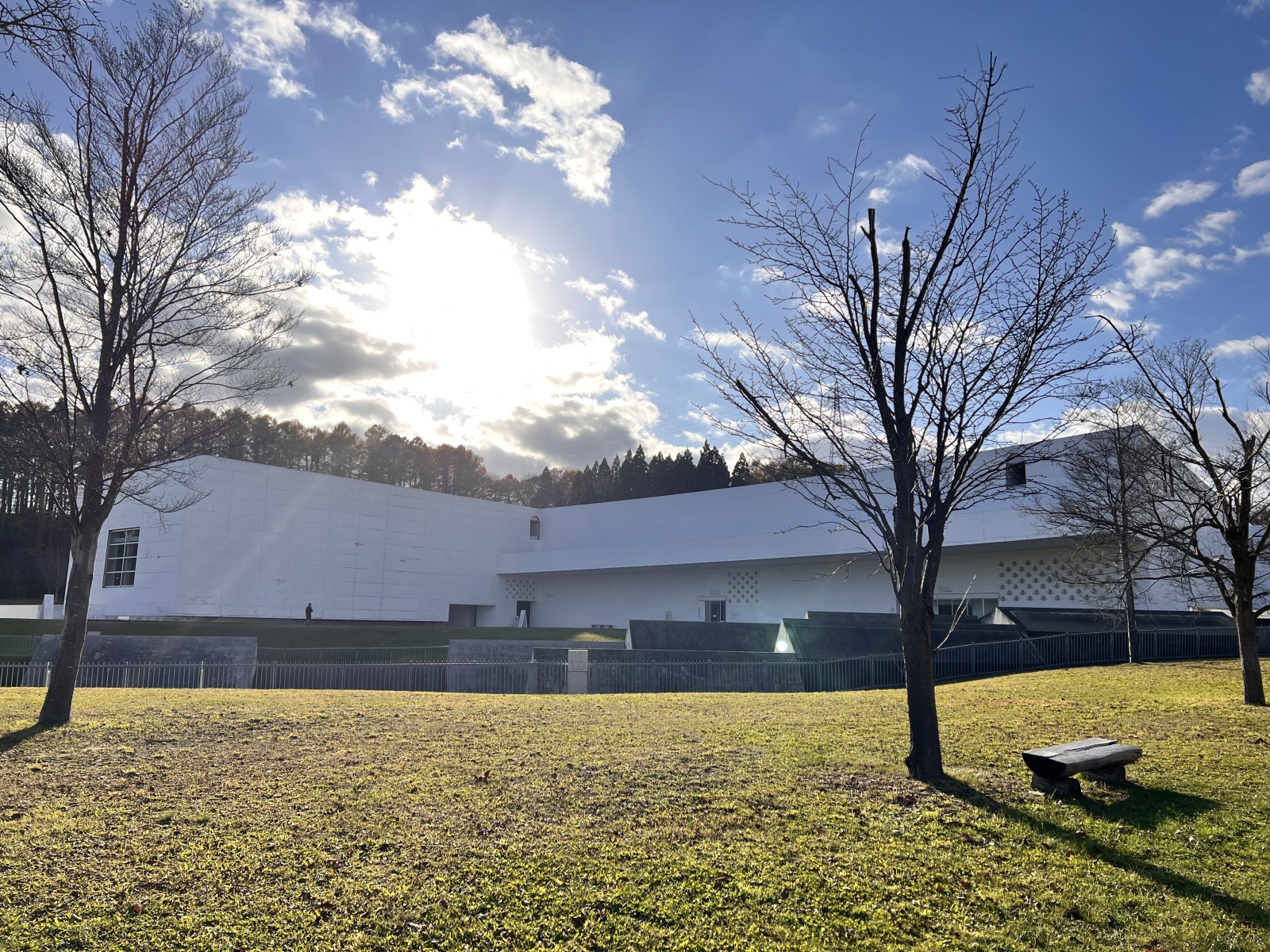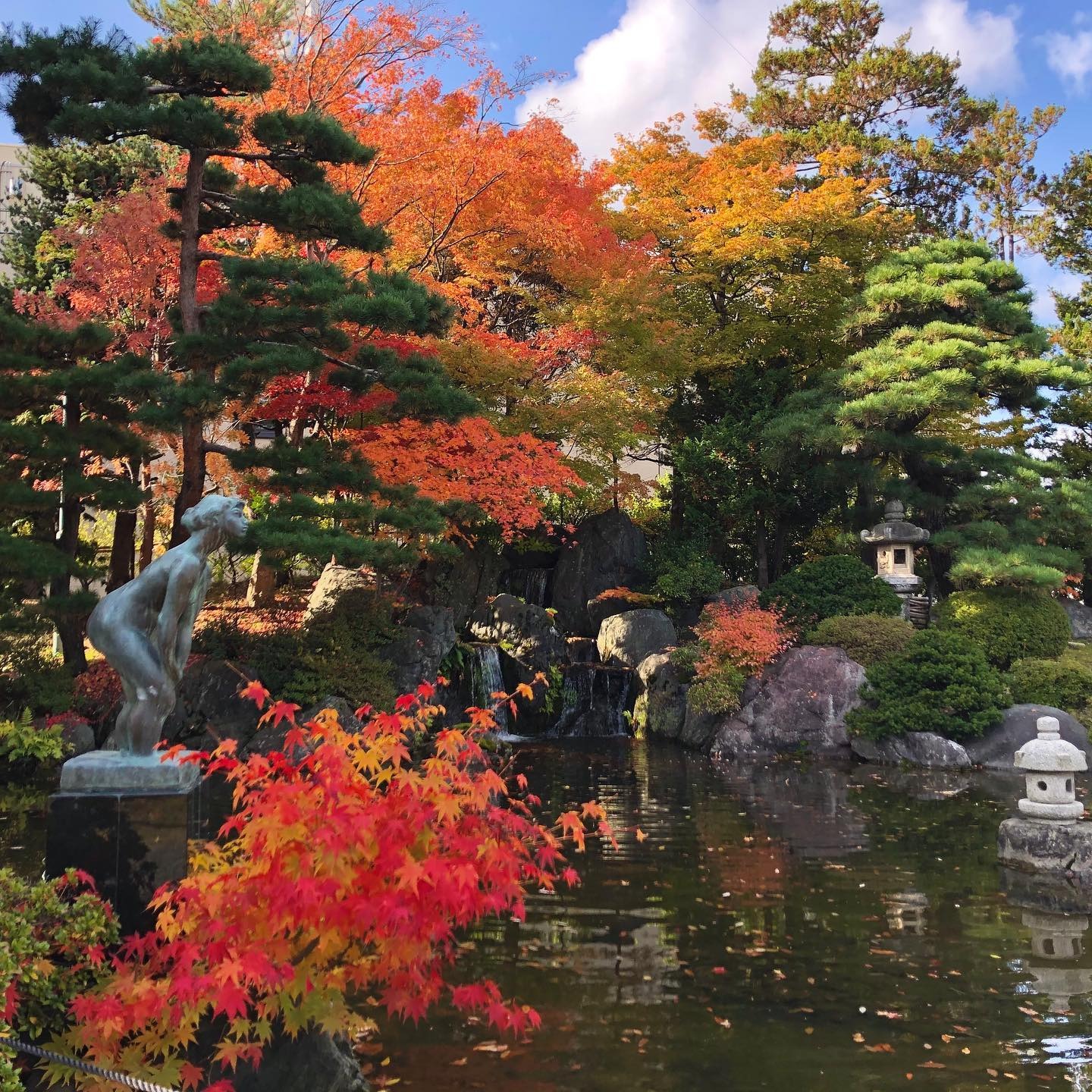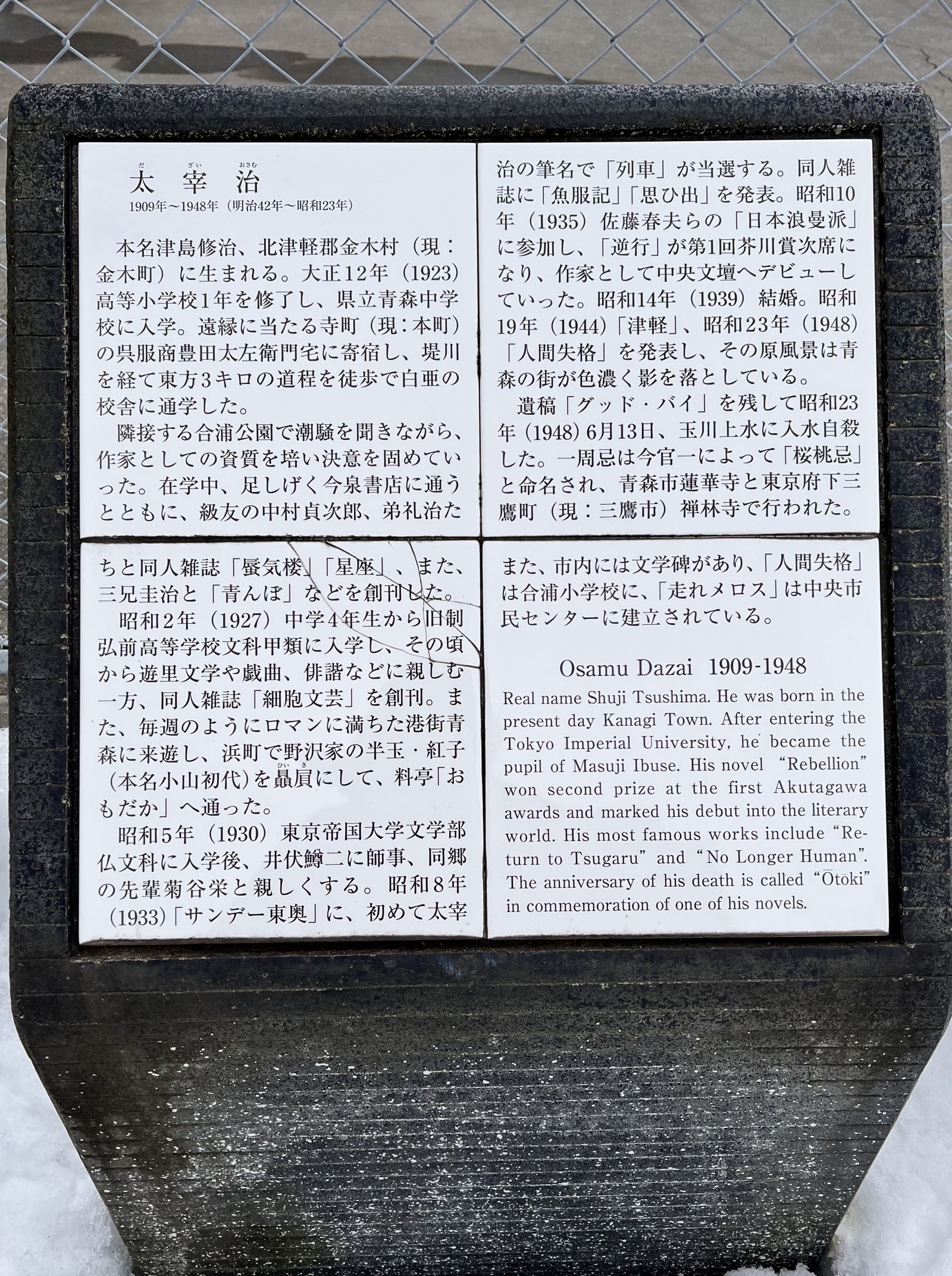Travelogue day2 - New Ways of Seeing
By Paul McInnes
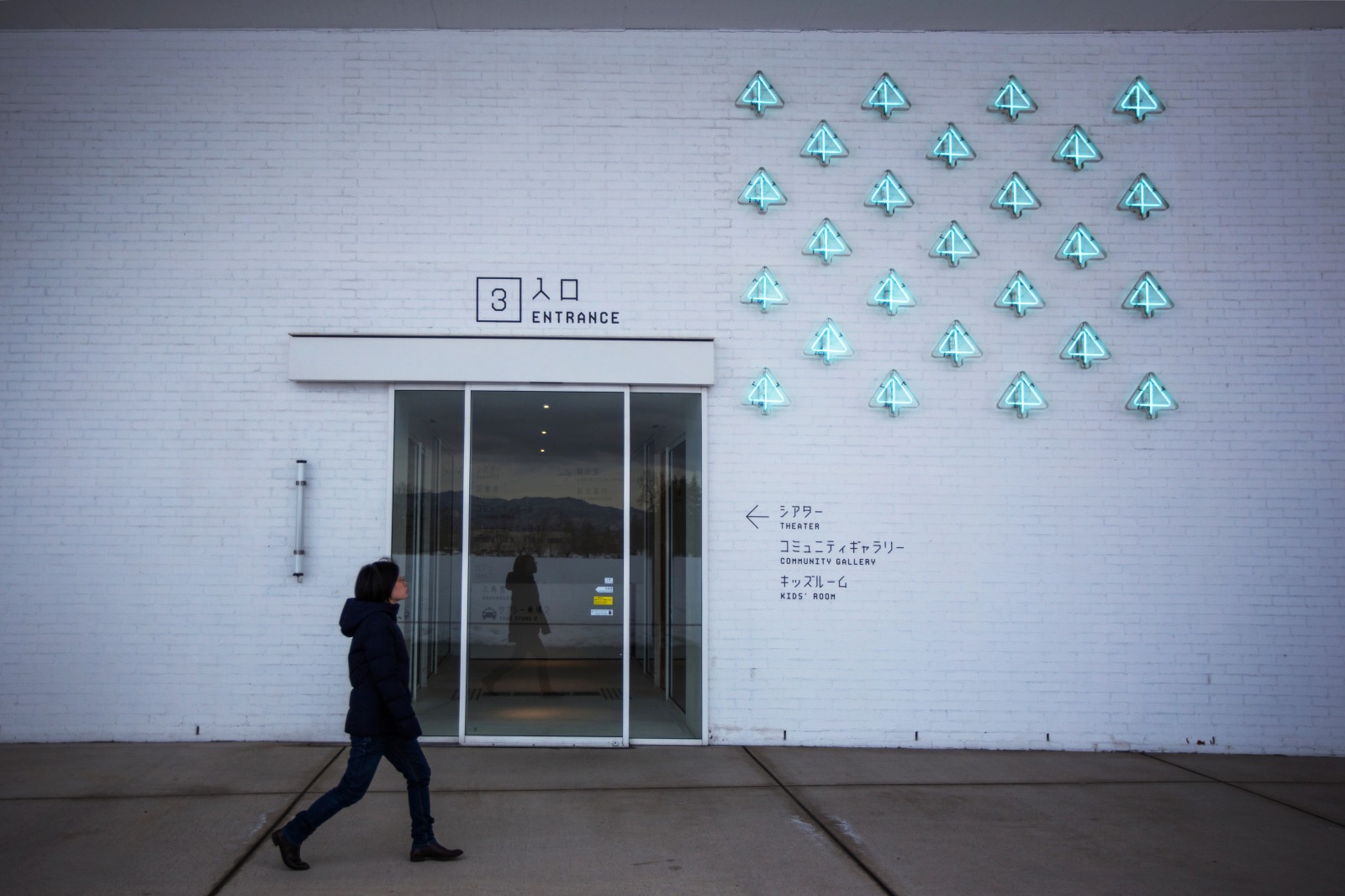
Aomori City plays host to a range of fascinating art galleries and cultural activities which celebrate the area's roots and history
I woke in my hotel room adjacent to Hon-Hachinohe Station with the fleeting remnants of a great Saturday night spent in the town's eight legendary yokocho. After a hearty breakfast (perfect for a long day ahead and for fighting the freezing winter weather which was rapidly approaching), I began my journey to Aomori City to explore the region's deep-seated affinity with art.
As I hopped on the shinkansen from Hachinohe Station to Shin-Aomori Station, the landscape gradually changed and the realization that the nature here, nearer the sea, is quite unforgiving. Aomori Station, a few minutes by local train from the Shin-Aomori shinkansen hub, is both welcoming and quiet. A plethora of stores with apple logos, souvenir shops, and soba and ramen restaurants can be found around the station area alongside a traditional Japanese shopping street (shotengai) named Shinmachi that takes you further into Aomori City proper.
My first stop was the renowned Nebuta Museum WA RASSE that sits on the banks of Aomori Bay. Nebuta is a figure seen all over Aomori Prefecture. The twisted faces and intimidating size are common to the warriors carried through the city on festival floats. Dancers wear costumes called haneto and chant "rassera" (the origin of WA RASSE) a local dialect for the more orthodox Japanese "irasshai"—meaning both "welcome" or "come and join." These giant monster-like figures have come to symbolize Aomori, and the museum is an ideal introduction to the importance of nebuta to the local people and culture.
The museum is huge and has an impressive facade. Inside, you can see four full-sized floats with a myriad of nebuta on display and a film of the floats offers a chance to see the intricate and awe-inspiring skill involved in creating the nebuta. The charming gift shop is the ideal stop to load up on colorful gifts for friends, colleagues, and family. If you're slightly peckish, I suggest a final stop at the museum's restaurant which prides itself on the variety and richness of ramen broths. I opted for the asari (clam broth) ramen, which at only ¥600 was an absolute steal.
My next destination was the spectacular Jun Aoki-designed Aomori Museum of Art that sits in a large rural space about a 10-minute drive from the station. Massive in size and huge in terms of reputation, quality, and ambition; it's a must-visit destination when in Aomori. The white cube gallery spaces inside were hosting the "Akashi Testaments" exhibition that explored the effects of the devastating Tohoku 2011 earthquake and tsunami; the exhibit featured work from Keizo Kitajima, Chikako Yamashiro, Suengwook Koh, and the late Shigeyuki Toshima, all were equally compelling and forceful.
Upon entering the main hall, visitors are confronted with three works from Russian-French artist Marc Chagall (known as one of the 20th century's most iconic painters). In its collection, the museum has three backdrops to the ballet "Aleko" painted by Chagall in 1942 while the artist was in the U.S., where he fled to escape persecution from the Nazis. The canvases are stunning, breathtaking, and worth a trip to the museum. You could spend days just looking at these works that are incomprehensibly ethereal and poignant.
The final port of call on my travels took me to the Munakata Shiko Memorial Museum of Art. I have to admit that I didn't know much about Munakata and his Showa-era woodblock printmaking. One of the most famous artists to come from Aomori, his contribution to Japanese and international art has installed him as one of the most significant Japanese artists of the 20th century. The museum itself opened in 1975 and is a beautiful example of the azekura-style of architecture.
Outside the museum, visitors come across a beautiful garden and pond so Instagrammable that it would be rude not to stop and take a few snaps. Inside the museum, space is compact but rewarding. A video room near the reception area shows a film about Munakata's life and works; while another, much larger space, opens up to a stunning retrospective of the great artist's work.
Munakata was heavily influenced by Van Gogh but eagle-eyed art lovers will also find some similarity with renowned but underrated sculptor Henri Gaudier-Brzeska.Visitors will be able to experience Munakata's powerful beliefs and influence of Buddhism in his oeuvre in addition to the incorporation of poetry and Japanese calligraphy into his prints. I arrived naive and ignorant but left the museum enlightened and touched by Munakata's life and devotion to his art.
I walked for about 40 minutes from Munakata Shiko Memorial Museum of Art to Aomori Station through the quiet backstreets and up the Shinmachi Shotengai. On the way, as I glanced upward at the last remaining signs of koyo (colored leaves), I realized that art and the creation of art should be appreciated more in every town. Aomori is a prefecture which understands and celebrates art. That principle is seen in the galleries, museums, and public spaces throughout the cities and towns.
I ambled past a memorial to writer Osamu Dazai on a road located just before you hit Shinmachi Shotengai. The legendary writer, originally from Kanagi in Aomori, is revered here and in other parts of Japan for his directness and turbulent life dedicated to his art. Dazai’s honesty and often brutal outlook on humanity and life can be seen as pessimistic. But in his candor, he encapsulates the people and culture of Aomori, their directness and quietness, their perseverance and strength, their beauty and search for truth.
Aomori, then, from the yokocho of Hachinohe to the cultural hubs in Aomori City is a place steeped in the celebration of art, culture and history. It's a fascinating part of Japan which wears its heart on its sleeves and prides itself on its friendly people, its local charm and a passion for sharing its multitude of histories with others.
